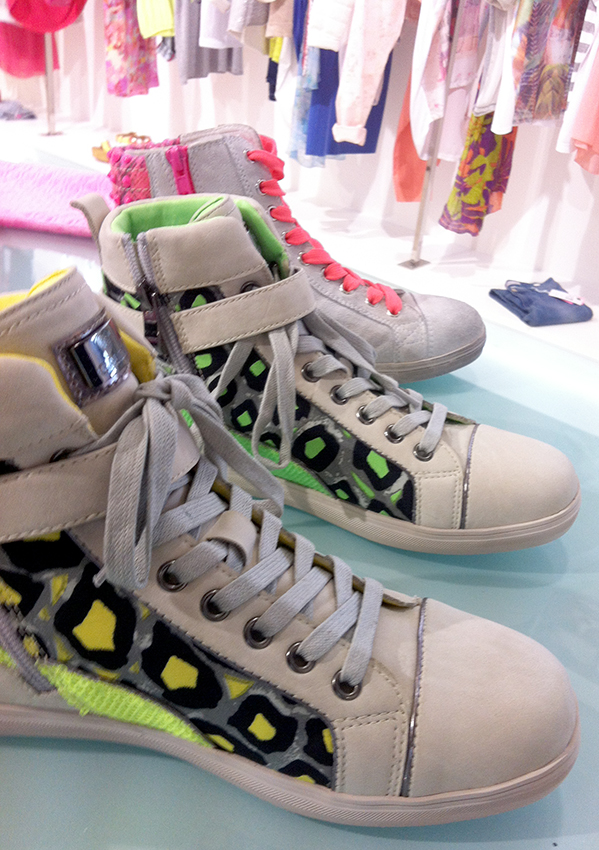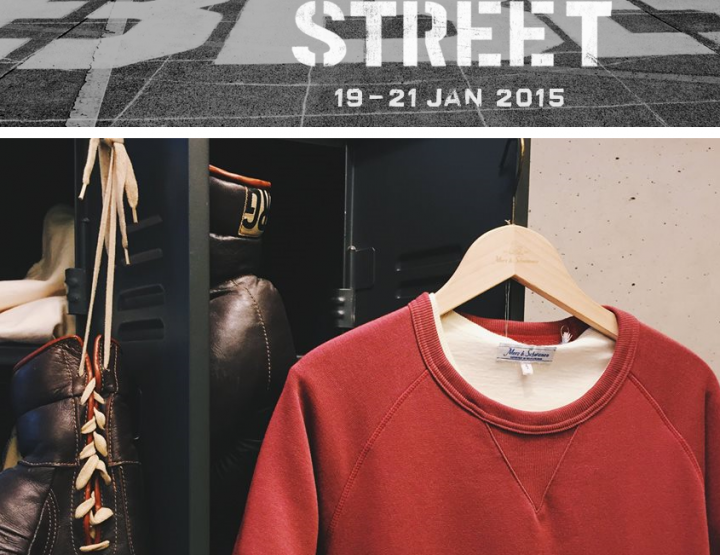Scroll down for english version
Pepe Jeans hat sich auf der BBB mit seinem eigenen „Marktplatz“ präsentiert. Soll heißen, kleine Holzhüttchen im Kreis aneinander gereiht, wo wir bei circa 7 Hüttchen jedes Mal einen unterschiedlichen Style präsentiert bekamen. Man konnte wild rum zirkulieren und in der Mitte war eine kleine Bar aufgebaut und ein Café, wo man es sich, umring von Pflanzen, gemütlich machen konnte. http://www.pepejeans.com/de_de/home.html?amc=intelliad&gclid=CNrH4NaJtLgCFSTKtAod_EsAow
Das 1973 in London gegründete Modeladel empfing die Besucher der BBB mit einer original-roten, Londoner Telefonzelle und einer hand made Art Work Wand. Und da entdeckten wir auch schon den ersten Trend, der sich auch bei anderen Denim-Jeans und Streetwear-Labels durchzog. Blau und Weiß, klingt so jetzt nicht gerade spektakulär, aber wenn die beiden Farben sich mischen und verlaufen hat man einen handfesten Trend. Was bereits vor einigen Jahren schon IN war, wird für kommende Saison wiederbelebt, ob weite Bluse oder eng anliegende Jeansweste.
Robuste Styles, casual, streetig, aber weiblich. Pepe Jeans ist nie verrotzt oder trashig, immer mit der gewissenen Londoner Attitüde, obwohl es ein streetiges Denim-Label ist.
Historie:
„Wir schreiben das Jahr 1973, mitten im Herzen des Portobello-Marktes in London…“ „Es handelt sich um eine buntgemischte Gruppe , die mit der Metro, dem Bus oder dem Rad aus allen Winkeln Londons kommen, um am avantgardistischsten Bekleidungsmarkt der Hauptstadt zusammenzukommen. Ihr Ziel: Ein Paar dieser Jeans abzustauben, die so schwer zu bekommen sind und die in aller Munde der wichtigen Modeversteher und -anbeter der Stadt sind. Es ist im Jahre 1973, hier unter der Notting Hill-Brücke, als Pepe Jeans ensteht.“
„Zu jener Zeit, als Modemarken noch nicht so sehr auf Marketingstrategien und Bargeld basierten, sondern eher auf wirklichen Menschen, die eine sich unterscheidende und mitunter risikobehaftete, doch stets atemlos beraubende Mode entdeckten, ließen die Gründer von Pepe Jeans Nitin Shah und seine Brüder Arun und Milan ihrer Vision freien Lauf und entwarfen Jeans mit vielen Details für ein Publikum, das der Welle von nichtssagenden und anonymen Designs bereits überdrüssig war.
Fast vier Jahrzente später. Pepe Jeans verkauft sich heute in 60 Ländern, wird über fast 7.000 Verkaufspunkte vertreiben, weist über 300 Verkaufsstellen auf internationaler Ebene mit über 2.000 Beschäftigten auf. Trotzdem behält das Unternehmen sein anfängliches Credo immer noch bei: Die Herstellung von trendiger Jeansbekleidung und anspruchsvoller junger Mode.“ So Pepe Jeans.
Bildrechte: http://test.fashion-club.tv
English version
Pepe Jeans presented itself in its own ,,market place’’ at the BBB trade fair, i.e. small wooden huts positioned in a circle, each of the seven huts in total showing a different style.
Entering Pepe’s market place, you could literally run around in circles of pure bliss, while a bar and a café were built in the center where you could take a seat in the presence of various decorative plants around you.
http://www.pepejeans.com/deFounded in 1973, the fashion label welcomed its customers and visitors with an original red London callbox and a handmade art work wall at the BBB.
Shortly after our arrival in Pepe Jeans’ universe, we spotted the first fashion trend , which already influenced other denim and street wear labels. .Blue and white, which sounds like water under the bridge at first . However, as soon as these colors mate and blend, it becomes clear that this particular use of color distinguishes Pepe Jeans from its contestants. What has been a trend decades ago, was revived by Pepe Jeans for the coming season, be it wide blouses or tight fitting denim vests.
Rough styles, casual and urban yet feminine. Pepe Jeans styles are never trashy and ready for the dustbin. It always impresses with a particular Londonish ,posh attitude despite its reputation as an urban denim label.
History:
,, The date is 1973 and a crowd of raucous kids are jostling for position around an unassuming market-stall sheltering from the icy February drizzle under a railway bridge in the heart of Portobello Market, London. The buzz is palpable. Trecking by Tube, bus and bike from the far corners of London this motley crue has converged on the capital’s hippest clothing market in a bid to lay their hands on an elusive pair of the jeans that has had London’s most discerning fashion devotees swapping notes. It was there in 1973, under that bridge in Notting Hill, that Pepe Jeans was born.’’
‘’In a time when fashion brands were made less by marketing science and cold cash, and more by real people discovering different, sometimes dangerous, and always breathlessly exciting fashion that the founders of Pepe jeans, Nitin Shah and his brothers Arun and Milan, unleashed their vision of detail-rich denims to an audience that had become tired by a tidal wave of bland and anonymous jeans. Fast forward almost 4 decades and Pepe Jeans today trades in 60 countries, sells through almost 7,000 doors at wholesale, has over 300 stores internationally, and employs over 2,000 employees, yet remains devoted to its initial mantra to create directional denims and challenging young fashion in an era dogged by conformism. ‘’, according to Pepe Jeans.



